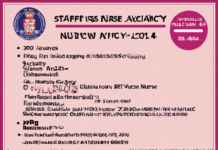Azee 500 is a popular antibiotic medication that is commonly prescribed by healthcare professionals to treat a variety of bacterial infections. This medication belongs to a class of antibiotics known as macrolides and contains azithromycin as its active ingredient. Azithromycin works by stopping the growth of bacteria, thereby helping the body’s immune system to fight off the infection. In this blog post, we will discuss the various uses of Azee 500, its potential side effects, and other important information that you need to know about this medication.
Uses of Azee 500
Azee 500 is prescribed to treat a wide range of bacterial infections, including:
1. Respiratory Infections
- Pneumonia: Azee 500 is commonly used to treat community-acquired pneumonia, a type of lung infection that occurs outside of healthcare settings.
- Bronchitis: This medication may also be prescribed for acute bacterial bronchitis, an infection of the bronchial tubes.
2. Skin and Soft Tissue Infections
- Cellulitis: Azee 500 can be used to treat cellulitis, a bacterial skin infection that affects the deeper layers of the skin.
- Impetigo: This medication is effective in treating impetigo, a contagious skin infection characterized by red sores.
3. Sexually Transmitted Infections
- Chlamydia: Azee 500 is often prescribed to treat chlamydia, a common sexually transmitted infection (STI).
- Gonorrhea: It may also be used to treat gonorrhea, another bacterial STI.
4. Ear Infections
- Otitis Media: Azee 500 is sometimes recommended for acute otitis media, an infection of the middle ear.
Side Effects of Azee 500
While Azee 500 is generally well-tolerated, like all medications, it can cause side effects in some individuals. Common side effects of Azee 500 may include:
- Nausea
- Vomiting
- Diarrhea
- Abdominal pain
- Dizziness
- Headache
- Changes in taste
In some cases, Azee 500 may cause more serious side effects, such as:
- Allergic reactions: Symptoms may include rash, itching, swelling of the face, tongue, or throat, severe dizziness, or trouble breathing.
- Liver problems: Signs of liver problems include nausea, upper stomach pain, tired feeling, loss of appetite, dark urine, clay-colored stools, or jaundice (yellowing of the skin or eyes).
- Irregular heart rhythm: This can manifest as a fast, pounding, or irregular heartbeat.
If you experience any severe side effects or symptoms that are concerning, it’s important to contact your healthcare provider immediately.
Important Precautions and Considerations
Before taking Azee 500, it’s essential to inform your healthcare provider about any allergies you have, as well as any other medications you are currently taking. Azithromycin can interact with other drugs, potentially affecting how they work or causing unwanted side effects.
Additionally, it’s crucial to take Azee 500 exactly as prescribed by your doctor and to complete the full course of treatment, even if you start feeling better before the medication is finished. Not completing the full course can contribute to bacterial resistance, making infections harder to treat in the future.
It’s also important to note that Azee 500 may not be suitable for everyone, especially those with certain medical conditions such as liver or kidney disease. Your healthcare provider will be able to determine if Azee 500 is the right choice for you based on your individual health circumstances.
Frequently Asked Questions (FAQs) about Azee 500
1. Can I drink alcohol while taking Azee 500?
It is generally best to avoid alcohol while taking Azee 500, as it may increase the risk of certain side effects such as liver problems.
2. How long does it take for Azee 500 to start working?
Azee 500 usually starts working within a few days, but it’s important to complete the full course of treatment as prescribed.
3. Can Azee 500 be used to treat viral infections?
No, Azee 500 is an antibiotic that is effective against bacterial infections only. It will not work for viral infections such as the common cold or flu.
4. What should I do if I miss a dose of Azee 500?
If you miss a dose of Azee 500, take it as soon as you remember. However, if it’s almost time for your next dose, skip the missed dose and continue with your regular dosing schedule.
5. Can Azee 500 be taken with food?
Azee 500 can be taken with or without food. However, taking it with food may help reduce stomach upset.
In conclusion, Azee 500 is a valuable medication for treating various bacterial infections. By understanding its uses, potential side effects, and important precautions, you can use this medication safely and effectively under the guidance of your healthcare provider. If you have any concerns or questions about Azee 500, don’t hesitate to consult with your healthcare provider for personalized advice and guidance.








